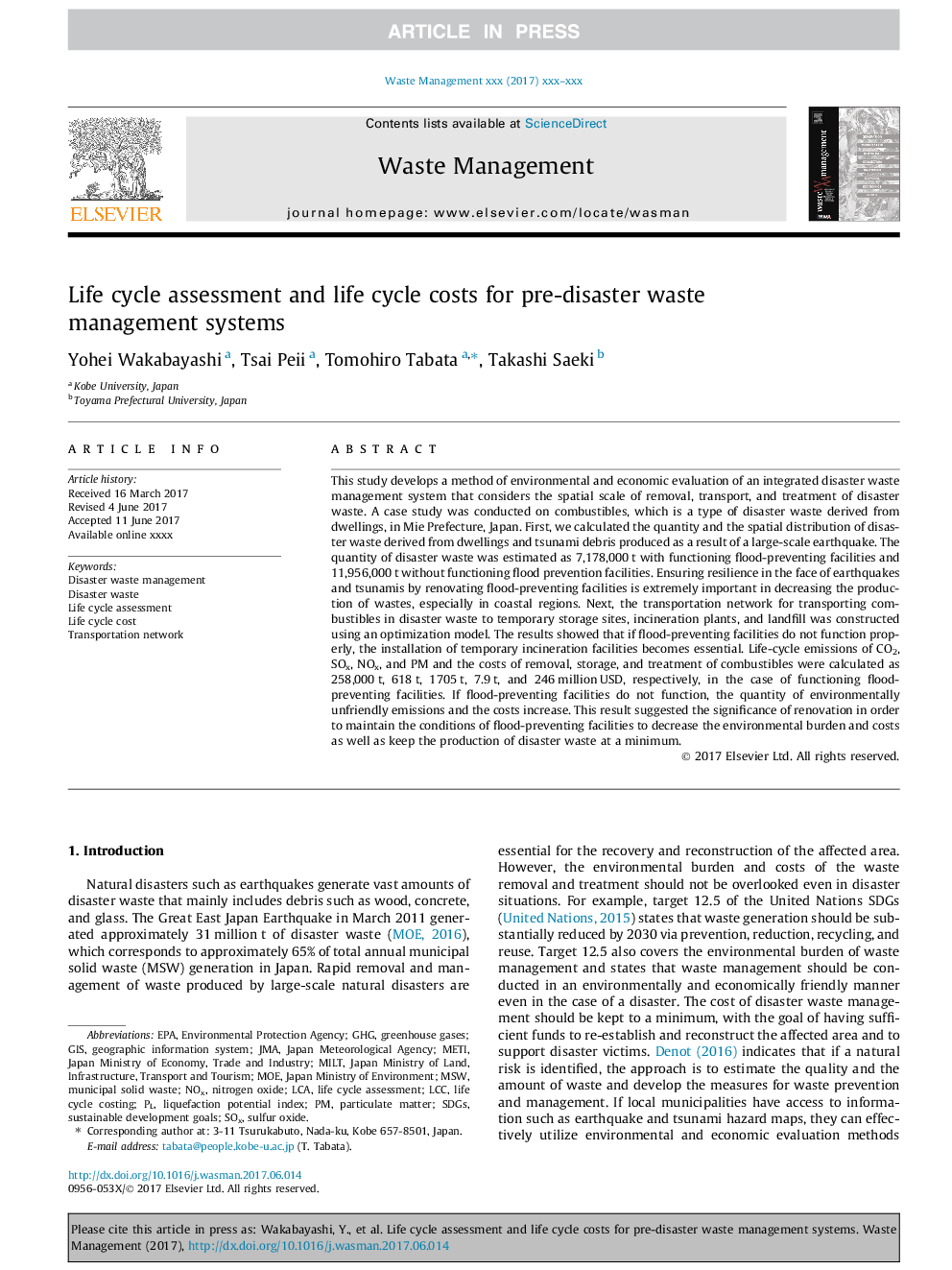This study develops a method of environmental and economic evaluation of an integrated disaster waste management system that considers the spatial scale of removal, transport, and treatment of disaster waste. A case study was conducted on combustibles, which is a type of disaster waste derived from dwellings, in Mie Prefecture, Japan. First, we calculated the quantity and the spatial distribution of disaster waste derived from dwellings and tsunami debris produced as a result of a large-scale earthquake. The quantity of disaster waste was estimated as 7,178,000 t with functioning flood-preventing facilities and 11,956,000 t without functioning flood prevention facilities. Ensuring resilience in the face of earthquakes and tsunamis by renovating flood-preventing facilities is extremely important in decreasing the production of wastes, especially in coastal regions. Next, the transportation network for transporting combustibles in disaster waste to temporary storage sites, incineration plants, and landfill was constructed using an optimization model. The results showed that if flood-preventing facilities do not function properly, the installation of temporary incineration facilities becomes essential. Life-cycle emissions of CO2, SOx, NOx, and PM and the costs of removal, storage, and treatment of combustibles were calculated as 258,000 t, 618 t, 1705 t, 7.9 t, and 246 million USD, respectively, in the case of functioning flood-preventing facilities. If flood-preventing facilities do not function, the quantity of environmentally unfriendly emissions and the costs increase. This result suggested the significance of renovation in order to maintain the conditions of flood-preventing facilities to decrease the environmental burden and costs as well as keep the production of disaster waste at a minimum.


